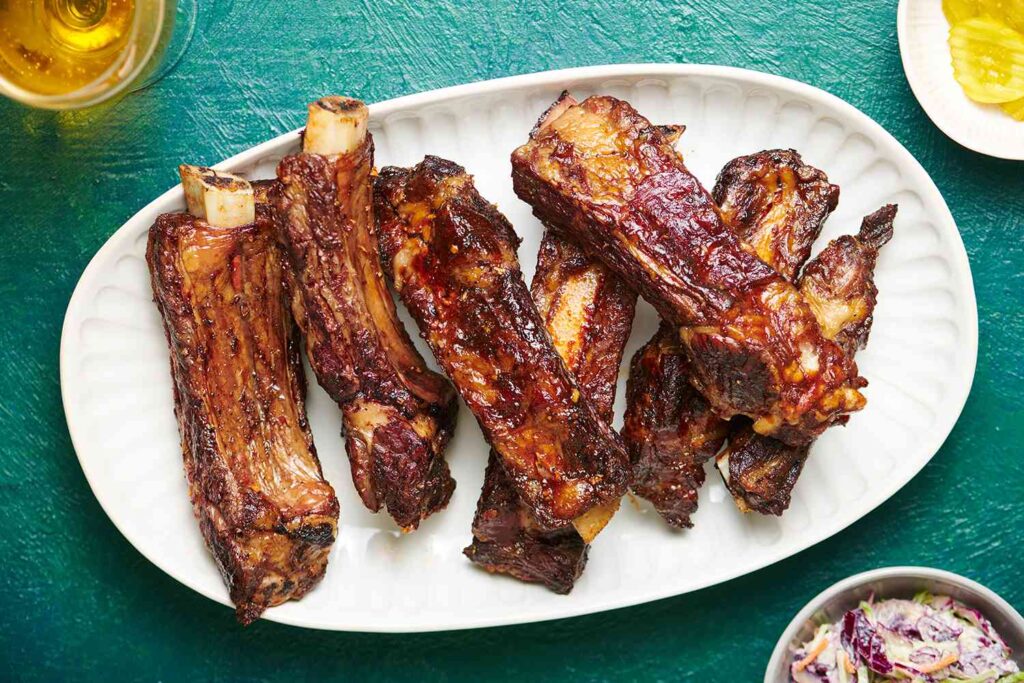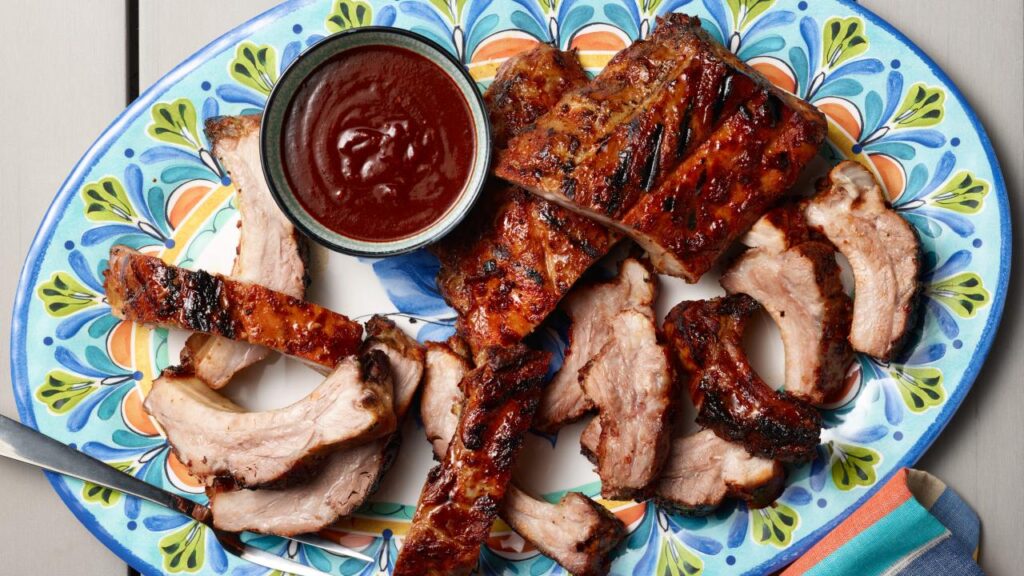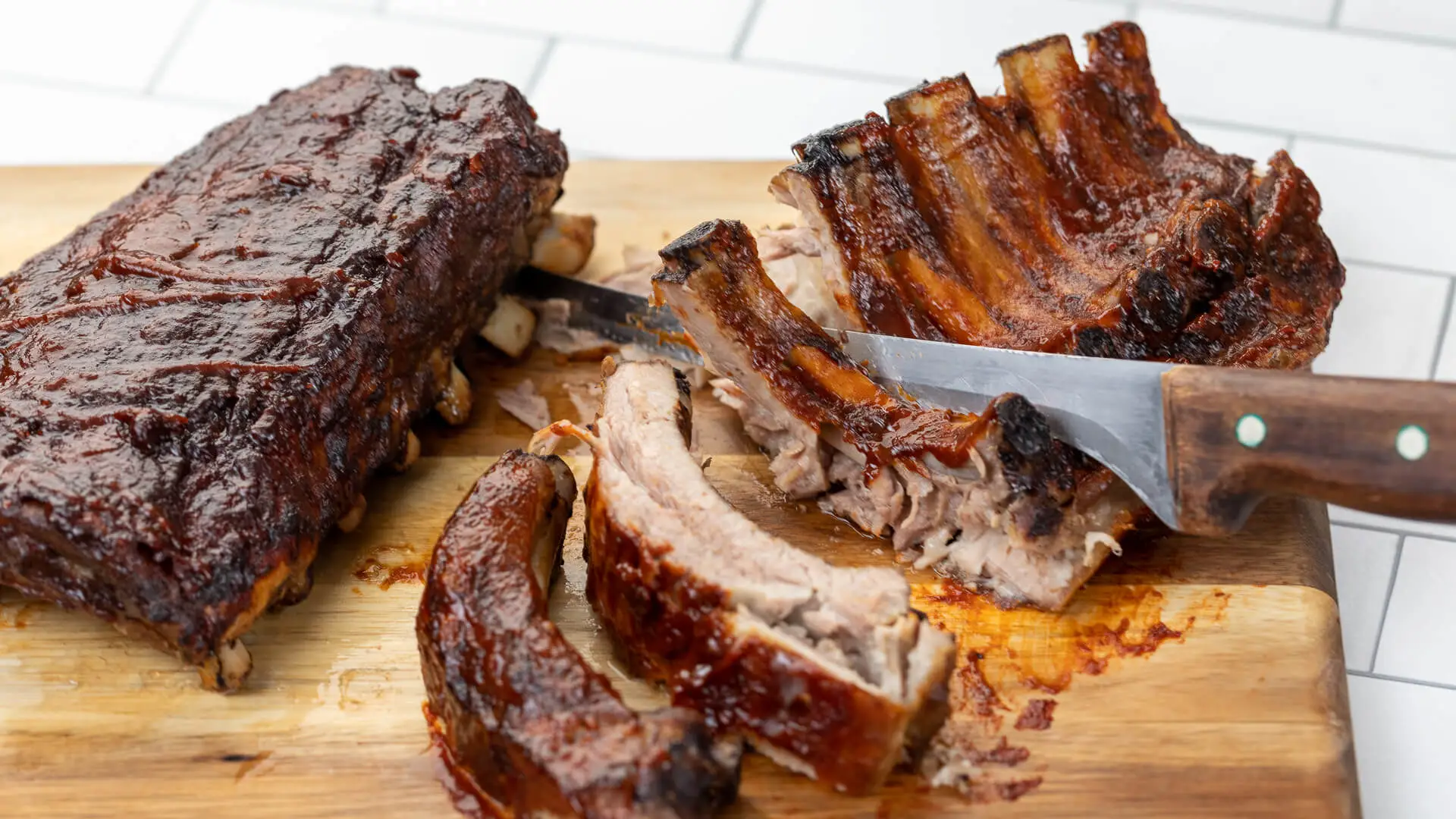Barbecue ribs are a timeless favorite, a dish that tantalizes taste buds and brings people together around the table.
Mastering the art of slow-cooked BBQ ribs requires patience, a few key techniques, and a passion for good food.
Whether you’re a backyard enthusiast or aspiring pitmaster, this guide will take you through everything you need to know to achieve tender, flavorful ribs that will have everyone asking for seconds.

Introduction to Slow-Cooked BBQ Ribs
There’s something magical about ribs that have been slow-cooked to perfection.
The meat becomes incredibly tender, infused with smoky flavors that make each bite a delight.
In this guide, we’ll explore the steps to creating mouthwatering BBQ ribs, from choosing the right cuts to mastering the cooking process.
Choosing the Right Ribs
Before you fire up the grill or smoker, selecting the right ribs is crucial.
You’ll typically find two main types: baby back ribs and spare ribs.
Baby back ribs are smaller and leaner, located higher on the hog’s back, while spare ribs are larger and meatier, coming from the belly area.
Selecting Quality Meat
When shopping for ribs, look for cuts with good marbling—the fat helps keep the meat moist during cooking.
Freshness is key; ideally, choose ribs that are pink and moist with a bit of fat.
If possible, visit a local butcher for high-quality, fresh cuts.
Preparing the Ribs
Trimming and Seasoning
Start by trimming any excess fat from the ribs.
Some prefer to remove the membrane on the bone side for easier eating, but this is optional.
Season generously with a dry rub or marinade of your choice.
Popular seasonings include paprika, garlic powder, brown sugar, and cayenne pepper for a balance of sweet and heat.

Cooking Methods: Grill vs. Smoker
Now comes the fun part—cooking the ribs! You have two primary methods: grilling and smoking.
Both impart delicious flavors, but the key difference lies in the cooking technique and equipment used.
Grilling Method
Direct vs. Indirect Heat
For grilling ribs, you can use either direct or indirect heat.
Direct heat means placing the ribs directly over the flame, while indirect heat involves cooking them next to the flame with the lid closed.
Indirect heat is ideal for slow-cooking ribs to achieve tenderness without burning the exterior.
Smoking Method
Low and Slow Cooking
Smoking ribs involves cooking them at a low temperature (around 225-250°F or 107-121°C) for several hours.
This slow-cooking process allows the meat to become incredibly tender while absorbing the smoky flavors from the wood chips or chunks used in the smoker.
Monitoring and Adjusting
Regardless of the method you choose, monitoring the cooking process is crucial.
Use a meat thermometer to check the internal temperature of the ribs—around 190-203°F (88-95°C) indicates they are done.
Baste with BBQ sauce during the last hour of cooking for a caramelized finish.
Conclusion
Mastering the art of slow-cooked BBQ ribs is a journey that rewards patience and attention to detail.
By choosing the right ribs, preparing them with care, and mastering your chosen cooking method, you can create ribs that rival those of your favorite BBQ joint.

FAQs About Slow-Cooked BBQ Ribs
FAQ 1: How long does it take to cook BBQ ribs?
Cooking times vary depending on the method and temperature, but generally, it takes 4-6 hours at low heat to achieve tender BBQ ribs.
FAQ 2: Should I remove the membrane from the ribs before cooking?
Removing the membrane is optional; it can make the ribs more tender and easier to eat, but leaving it on is fine too.
FAQ 3: What type of wood is best for smoking ribs?
Hickory, apple, and cherry woods are popular choices for smoking ribs, each imparting unique flavors to the meat.
FAQ 4: How do I know when ribs are done?
Ribs are done when the meat is tender and easily pulls away from the bone.
Use a meat thermometer for accuracy.
FAQ 5: Can I use a gas grill to cook BBQ ribs?
Yes, you can! Follow the indirect heat method and maintain a low temperature for best results.
